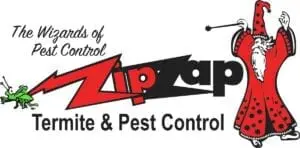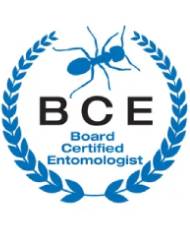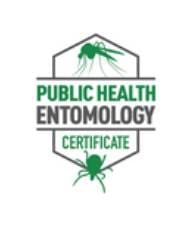How to Identify Ticks and Bite Prevention

Tick Talk: Staying Safe from Tick Bites in Kansas City
Kansas City’s beautiful parks and green spaces are a significant draw, but they also mean we share our environment with ticks. The threat of ticks and bite prevention will be discussed below. Knowing how to identify these tiny pests, understanding the risks they pose, and taking preventive measures is crucial for protecting yourself, your family, and your pets.
Identifying Ticks in Kansas City
Several tick species call Kansas City home. Here are the most common ones:
- American Dog Tick:
- These are the most frequently encountered ticks.
- Adults have a reddish-brown to brown body with whitish or yellowish markings on their shield (scutum).
- They are larger than other common ticks.
- Lone Star Tick:
- Females have a distinctive white “lone star” spot on their back.
- Males have pale horseshoe-shaped markings near the front.
- They are aggressive biters and can transmit several diseases.
- Blacklegged Tick (Deer Tick):
- These ticks are smaller and darker than the others.
- Adult females have a reddish-orange abdomen when engorged.
- This tick is the primary vector for Lyme disease.
Viruses and Diseases Transmitted by Ticks
Ticks are vectors for various diseases, including:
- Lyme Disease:
- Transmitted by blacklegged ticks.
- Symptoms include fever, headache, fatigue, and a “bull’s-eye” rash.
- Rocky Mountain Spotted Fever (RMSF):
- Transmitted by American dog ticks and Lone Star ticks.
- Symptoms include fever, headache, muscle aches, and a rash.
- Ehrlichiosis:
- Transmitted by Lone Star ticks.
- Symptoms include fever, headache, muscle aches, and fatigue.
- Southern Tick-Associated Rash Illness (STARI):
- Transmitted by the Lone Star Tick.
- Symptoms are similar to those of Lyme disease.
- Alpha-gal Syndrome (AGS):
- This is a reaction to red meat and sometimes other mammalian products.
- It is believed to be caused by a bite from a Lone Star tick.
The Importance of Tick Control
Tick bites can lead to serious health problems. Controlling tick populations around your home is essential for reducing the risk of exposure.
Tips for Preventing Ticks Around Your Home
- Maintain Your Yard:
- Keep the grass mowed short.
- Trim bushes and trees to reduce shady, moist areas.
- Remove leaf litter and debris where ticks can hide.
- Create a Tick-Safe Zone:
- Establish a wood chip or gravel barrier between your lawn and wooded areas.
- Keep play areas and patios away from wooded edges.
- Discourage Wildlife:
- Keep bird feeders and pet food away from your home to avoid attracting animals that carry ticks.
- Secure trash cans.
Ticks and Bite Prevention: Protecting Your Pets
Pets are particularly vulnerable to tick bites. Here’s how to protect them:
- Use Tick Prevention Products:
- Consult your veterinarian about appropriate tick prevention medications, such as topical treatments, oral medications, or tick collars.
- Check Your Pets Regularly:
- Please thoroughly inspect your pets for ticks after they’ve been outdoors. Please pay close attention to the areas around their ears, necks, and paws.
- Keep Your Pet’s Environment Clean:
- Wash pet bedding regularly.
Avoiding Tick Bites on Yourself
- Wear Protective Clothing:
- Wear long pants, long-sleeved shirts, and socks when venturing into wooded or grassy areas.
- Tuck your pants into your socks to prevent ticks from crawling up your legs.
- Use Insect Repellent:
- Apply insect repellent containing DEET, picaridin, or permethrin to your skin and clothing.
- Check Yourself for Ticks:
- After spending time outdoors, thoroughly inspect yourself and your children for ticks. Pay close attention to the areas around your hairline, ears, and groin.
- Shower After Being Outdoors:
- Showering within two hours of coming indoors has been shown to reduce your risk of getting Lyme disease.
- Know How to Remove a Tick:
- Use fine-tipped tweezers to grasp the tick as close to the skin’s surface as possible.
- Pull upward with steady, even pressure.
- Clean the bite area with rubbing alcohol or soap and water.
The Importance of Professional Pest Management
While DIY methods can help, professional pest management services provide more comprehensive ticks and bite prevention management.
- Targeted Treatments:
- Pest management professionals have the expertise to identify tick hotspots and apply targeted treatments.
- Long-Term Solutions:
- They can develop customized plans to address tick infestations and prevent future problems.
- Safety and Expertise:
- Professionals use tested and effective products and techniques, minimizing risks to your family and pets.
By staying informed and taking proactive steps, you can minimize your risk of ticks and bites and enjoy the beauty of Kansas City’s outdoors safely.

Jeffery Preece, BCE, PHE
Jeffery Preece is the owner/technical director of ZipZap Termite & Pest Control.



